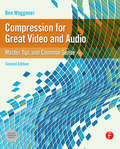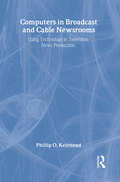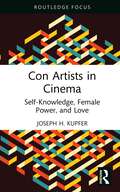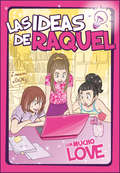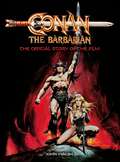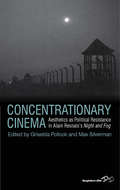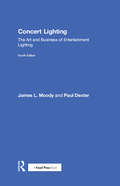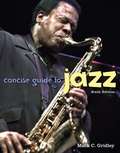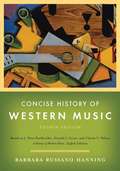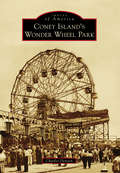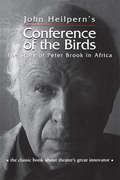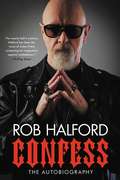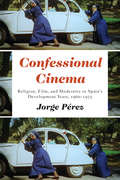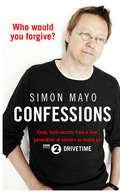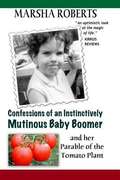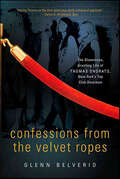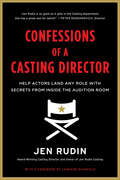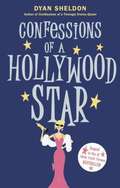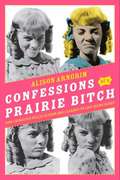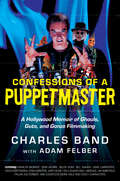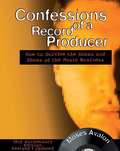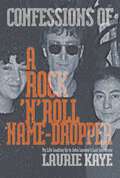- Table View
- List View
Compression for Great Video and Audio: Master Tips and Common Sense
by Ben WaggonerLearn how to compress video and audio with optimal quality and minimal hassles. Renowned expert Ben Waggoner teaches you to improve the quality of your final content and develop effective workflows. Understand the basic concepts of vision and hearing, apply that knowledge in the context of compression, then move onto practical, applicable information for creating, editing, and compressing the best video and audio, whether you're delivering for the web, DVD, Blu-ray, phones, or beyond. Clear examples of how to make the best choices in real-world projects Covers Mac and Windows products for a complete look at today's compression technologies: all the different tools, codecs, and formats for different kinds of deliverables are described, focusing on how to pick the right options for particular projects, players, and sources Formats Windows Media QuickTime Flash FLV and F4V MPEG-4 and H.264 MPEG-2 Ogg Vorbis and Theora Silverlight and Smooth Streaming Devices iPod and iPhone Zune HD Playstation Portable Playstation 3 Xbox 360 DVD and Blu-ray
Computers Of Star Trek
by Lois H. Gresh Robert WeinbergThe depiction of computers on the various "Star Trek" series has ranged from lame to breathtakingly imaginative. This book covers the gamut, and makes lucid and entertaining comparison of these fictional computers with those that now exist or are likely to inhabit our future. Throughout its history, "Star Trek" has been an accurate reflection of contemporary ideas about computers and their role in our lives. Affectionately but without illusions, The Computers of Star Trek shows how those ideas compare with what we now know we can and will do with computers.
Computers in Broadcast and Cable Newsrooms: Using Technology in Television News Production (Routledge Communication Series)
by Phillip O. KeirsteadComputers in Broadcast and Cable Newsrooms: Using Technology in Television News Production takes readers through the use of computers and software in the broadcast/cable newsroom environment. Author Phillip O. Keirstead began writing about television news technology decades ago in an effort to help television news managers cope with technological change. In this text, he demonstrates the myriad ways in which today's journalism is tied to technology, and he shows how television news journalists rely on varied and complex technologies to produce timely, interesting, and informative broadcasts. Using a hands-on, practical approach to cover the role computers play in various parts of the newsroom, the volume will be of great practical value to undergraduate and graduate students in advanced broadcast/news television courses.
Con Artists in Cinema: Self-Knowledge, Female Power, and Love (Routledge Focus on Film Studies)
by Joseph H. KupferThis book examines the con artist film as a genre, exploring its main features while also addressing variations within it. The volume explores three diverse themes of the con artist film: edification, self-awareness, and liberation through con games; the femme fatale as con artist; and romantic love as a plot point. Analyzing movies such as Matchstick Men (2003), House of Games (1987), Body Heat (1981), The Last Seduction (1994), Birthday Girl (2001), and The Game (1997), the book also explores their psychological investigation of the con artist figure, the con artist’s mark, and how the dynamic between these roles implicates us as the audience. It also addresses the con artist film genre’s close association with neo-noir, especially through the femme fatale figure, investigating and updating the rich tradition of noir film. Demonstrating the range and flexibility of this understudied genre, this book will be of interest to scholars and students of film studies, ethics, and those studying the representation of women in film..
Con mucho LOVE (Las ideas de Raquel #Volumen 2)
by Las ideas de RaquelOcurrente, un poco loca y muy muy divertida. Así es Raquel. Así que no te puedes perder esta nueva entrega de Las ideas de Raquel. Después de la emocionante aventura vivida con FuturApp y de ver cumplido su deseo de salir con el chico que le gusta, Raquel decide ayudar a cumplir los deseos de los demás. Con la imprescindible ayuda de Laura y Bea, crean una nueva sección en el blog del instituto: «El consultorio de Raquel». Allí darán consejos a quien los necesite. Las consultas empiezan a llegar, pero a veces dar una respuesta no es nada fácil. ¿Conseguirán Raquel y sus amigas que se cumplan los deseos de los demás? Y... ¿cómo resolver el tema cuando un chico inesperado se enamora de ti? Diversión asegurada en esta nueva entrega de Las ideas de Raquel.
Conan the Barbarian: The Official Story of the Film
by John WalshOfficial retrospective hardback book telling the story of the making of Conan The Barbarian, including interviews with cast and crew and featuring behind-the-scenes photography from the shoot.In 1982, Robert E. Howard's iconic literary anti-hero, Conan, slashed his way from page to screen after a perilous decades-long journey. With its potent mix of epic vistas and bloody battles, Conan the Barbarian thrilled moviegoers around the world and launched the career of Arnold Schwarzenegger. Forty years after its release, this cult-classic film is celebrated in Conan the Barbarian – The Official Story of the Film, a lush hardback volume that tells the full story of how the film was made. Brand new interviews with cast and crew, as well behind-the-scenes photography from the set and concept art created for the production, give fascinating insights into the development of one of the best-loved fantasy films of the 1980s.
Concentrationary Cinema
by Griselda Pollock Max SilvermanSince its completion in 1955, Alain Resnais's Night and Fog (Nuit et Brouillard) has been considered one of the most important films to confront the catastrophe and atrocities of the Nazi era. But was it a film about the Holocaust that failed to recognize the racist genocide? Or was the film not about the Holocaust as we know it today but a political and aesthetic response to what David Rousset, the French political prisoner from Buchenwald, identified on his return in 1945 as the 'concentrationary universe' which, now actualized, might release its totalitarian plague any time and anywhere? What kind of memory does the film create to warn us of the continued presence of this concentrationary universe? This international collection re-examines Resnais's benchmark film in terms of both its political and historical context of representation of the camps and of other instances of the concentrationary in contemporary cinema. Through a range of critical readings, Concentrationary Cinema explores the cinematic aesthetics of political resistance not to the Holocaust as such but to the political novelty of absolute power represented by the concentrationary system and its assault on the human condition.
Concert Lighting: The Art and Business of Entertainment Lighting
by James Moody Paul DexterConcert Lighting: Tools, Techniques, Art, and Business Fourth Edition provides readers with an updated look at how to succeed in the complex world of concert lighting design and technology. The authors have reorganized the book into three comprehensive and thoroughly revised sections, covering history, equipment and technology, and design, and containing new information on LED technology, pixel mapping, projection options, media servers, automated lighting, solutions for moving lights, DMX, and Ethernet problems, and designer communication and collaboration. This book also explores the cross-media use of concert lighting techniques in film, video, theatre, and the corporate world, highlighted with advice from master designers such as Bruce Rodgers, Cosmo Wilson, and Sarah Landau. From securing precious contracts to knowing the best equipment to use to design a show, Concert Lighting covers everything a designer needs to know about working in the touring industry.
Concise Guide to Jazz (6th Edition)
by Mark C. GridleyThe Concise Guide to Jazz provides an introduction to jazz that is as clear and accurate as Jazz Styles but without as much detail. It is a very useful guide for teachers and students.
Concise History of Western Music (Fourth Edition)
by Barbara Russano HanningBased on A History of Western Music, by J. Peter Burkholder, Donald Jay Grout, and Claude V. Palisca, Concise History of Western Music, Fourth Edition, offers authoritative coverage of the essential works and genres in Western music history. By setting musical events into a memorable historical and cultural context, Concise History of Western Music provides a history students will read and remember.
Coney Island
by Laura J. HoffmanConey Island is famous for so much more than just hot dogs and wild rides. At the turn of the 20th century, it was known as the "Playground of the World." In the beginning, this upscale resort area catered to the rich. Between 1897 and 1904, three lavish amusements parks opened in Coney Island. By 1920, the subway extended to Stillwell Avenue, which made Coney Island more accessible for everyone. The abundant history is remarkable, and its peaks and valleys closely resemble one of its most famous icons, the roller coaster. Coney Island hit its apex between 1910 and 1930. Afterwards, it suffered through the Great Depression, went into major decline after World War II, and hit bottom in the 1970s and 1980s. In recent years, there has been a profound revitalization effort to bring the area back to its glory days. Despite the major setback caused by Superstorm Sandy in 2012, the spirit of Coney Island is alive and well.
Coney Island's Wonder Wheel Park (Images of America)
by Charles DensonThe venerable Wonder Wheel, Coney Island's oldest and greatest attraction, has dominated the Coney Island skyline for more than a century. Towering over an ephemeral amusement zone long plagued by fires, floods, and ill-conceived urban renewal schemes, the magnificent steel machine has proved to be the ultimate survivor. The ride boasts impressive statistics. A combination of roller coaster and Ferris wheel, the 150-foot-tall structure weighs 200 tons, has 16 swinging cars and 8 stationary cars, and can carry 144 riders. More than 40 million passengers have taken a ride on the wheel since it was built in 1920, and during that time, it has maintained a perfect safety record. The ride is also a monument to immigrant initiative. Charles Hermann, the ride's designer, was Romanian; the original owner, Herman Garms, was German; and Denos Vourderis, who purchased and lovingly restored the aging landmark in 1983, was Greek. An official New York City landmark, the Wonder Wheel is now owned and operated by three generations of the Vourderis family as the centerpiece of their Deno's Wonder Wheel Park. The enduring saga of this iconic ride, and the family that saved it, provide a captivating chapter of Coney Island's history.
Conference of the Birds: The Story of Peter Brook in Africa
by John HeilpernConference of the Birds is John Heilpern's true story of an extraordinary journey. In December 1972, the director Peter Brook and an international troupe of actors (Helen Mirren and Yoshi Oida among them) left their Paris base to emerge again in the Sahara desert. It was the start of an 8,500-mile expedition through Africa without precedent in the history of theater. Brook was in search of a new beginning that has since been revealed in all his work--from Conference of the Birds and Carmen to The Mahabharata and beyond. At the heart of John Heilpern's brilliant account of the African experiment is a story that became a search for the miraculous.
Confess: The Autobiography
by Rob HalfordThe legendary frontman of Judas Priest, one of the most successful heavy metal bands of all time, celebrates five decades of heavy metal in this tell-all memoir.Most priests hear confessions. This one is making his.Rob Halford, front man of global iconic metal band Judas Priest, is a true "Metal God." Raised in Britain's hard-working, heavy industrial heartland, he and his music were forged in the Black Country. Confess, his full autobiography, is an unforgettable rock 'n' roll story-a journey from a Walsall council estate to musical fame via alcoholism, addiction, police cells, ill-fated sexual trysts, and bleak personal tragedy, through to rehab, coming out, redemption . . . and finding love.Now, he is telling his gospel truth.Told with Halford's trademark self-deprecating, deadpan Black Country humor, Confess is the story of an extraordinary five decades in the music industry. It is also the tale of unlikely encounters with everybody from Superman to Andy Warhol, Madonna, Jack Nicholson, and the Queen. More than anything else, it's a celebration of the fire and power of heavy metal. Rob Halford has decided to Confess. Because it's good for the soul.
Confessional Cinema: Religion, Film, and Modernity in Spain’s Development Years, 1960–1975
by Jorge PerezIn Confessional Cinema, Jorge Pérez analyzes how cinema engaged the shifting role of religion during the last fifteen years of Francisco Franco’s dictatorship. Pérez interrogates the assumption that after 1957, when the Franco regime recast itself in a secular and modernizing fashion, religion vanished from the cultural field. Instead, Spanish cinema addressed the transformation within Spanish Catholicism following Vatican II and Spain’s modernization processes. Confessional Cinema offers the first analysis of a neglected body of Spanish films, "nun films," which focus on the active role of religious women in the transformation of Spanish Catholicism. Pérez argues that commercial films, despite being less aesthetically accomplished, delved more than oppositional, art-house films into the fluctuating zeitgeist of the development years regarding the transformations within Spanish Catholicism. Confessional Cinema offers a provocative and original analysis of the significance of religion not from a theological point of view, but rather as a socio-political force and cultural determinant in the Spanish public sphere of this period, known as desarrollismo (development years) from 1960-1975.
Confessions
by Simon MayoSimon Mayo first opened his confessional in 1988 on BBC Radio 1's Breakfast Show. Every day, one shamefaced listener would share their deepest, darkest secret while millions tuned in to find out whether or not Simon would grant his forgiveness.Over twenty years later, Simon presents the daily Drivetime show on BBC Radio 2, and the confessions segment is back. Now those guilty listeners who missed their chance first time round have joined a whole new generation of sinners to beg for clemency from Father Mayo and his flock. From supermarket-wrecking games of 'aisle catch' to kidnapped pensioners and clandestine pet vasectomies, this is a brand-new collection of hilarious letters and emails from Simon's ever-popular show.Join the discussion on Twitter: #drivetimeconfessions
Confessions Of An Instinctively Mutinous Baby Boomer: And Her Parable Of The Tomato Plant
by Marsha RobertsMarsha Roberts was never afraid to be bold because she had a secret. She knew if she stumbled, angels would catch her. She had a connection to God that seemed almost magical. For decades, angels and miracles had worked for her better than a credit card with no limit. All of that changed without warning. They called it The Recession of 2008, but like millions of other people, it was in-your-face personal to Marsha. She was on the verge of losing everything. But worst of all, in the frantic pursuit to keep her head above water, she felt her sense of self, her own personal magic, slip away. If she was going to get her family through this crisis, she was going to have to become the sassy, mutinous gal she had once been - the one who believed in miracles. And the only way to do that was to solve the profound mystery of how God had helped her beat practically impossible odds time and again. There were clues in the oddest places: in a tomato plant and a Barbie doll, in an ICU and a frozen windshield, in the Alaskan sun and a Mediterranean piazza. Even in her dog Smokey. She had to discover the key to what it all meant so she could find her way back. Back to that magical, powerful and spiritual connection. Everything she had fought for and believed in was at stake. Marsha's style of writing makes you feel as if you're with a trusted friend, sharing coffee and life lessons. This is a book that belongs on your nightstand.
Confessions from the Velvet Ropes: The Glamorous, Grueling Life of Thomas Onorato, New York's Top Club Doorman
by Glenn BelverioNew York's top doorman, Thomas Onorato, raises the ropes and gives readers a sneak peak into some of the world's most exclusive parties."If you are not on the guest list or if I don't know you or if I don't like you, you are NOT GETTING INTO THIS PARTY!"The doorman. The gatekeeper of the night. These silent observers see it all and yet say nothing. Until now. In Confessions from the Velvet Ropes, New York's top club doorman, Thomas Onorato, lifts the ropes and lets ordinary readers into this exciting world. The book is an entertaining and hilarious collection of tales from the worlds of nightlife, fashion shows and celebrity parties. Highlights include: The night Madonna DJed at an intimate downtown club, Courtney Love's surprise concert that ended in her arrest, the crazed stalker who attacked Pulp's Jarvis Cocker, the aerial attack on Adrien Brody's birthday party, Diddy's surprise appearance at an electro-punk event and more. Onorato was always on hand and brings his insider info and nightlife wisdom to readers of Confessions from the Velvet Ropes. Combining elements of juicy gossip columns, rock star fan memoirs and nightlife social studies, Confessions from the Velvet Ropes is a tell-all with style, including humorous side-bars and tips on how readers might make it past the velvet ropes.
Confessions of a Casting Director: Help Actors Land Any Role with Secrets from Inside the Audition Room
by Jen RudinA must-have for any aspiring actor or stage parent––the definitive guide to breaking into film, television, theater, and even YouTube from a top casting directorPacked with information that aspiring actors clamor for, this up-to-the-minute advice from a true expert is essential reading for anyone pursuing an acting career. Longtime casting director Jen Rudin demystifies the intimidating and constantly changing audition process, sharing insider tips on how to prepare for every type of audition, from musical theater, television (including reality TV), and film to voice-overs, animated movies, and even Web series. In this comprehensive guide, Rudin covers everything that today's actor needs to succeed on subjects like: finding an agent or manager, using technology to your advantage, understanding the world of child acting, living in New York versus L.A., turning a callback into an offer for the role, and many more.Every actor should walk into an audition room feeling confident and prepared, and this book is full of the dos and don'ts and surefire tricks to help turn rejection into that first big break. Complete with checklists, easy-to-follow game plans, and advice from successful actors, agents, and industry professionals, Confessions of a Casting Director is like having a private audition coach in your back pocket.
Confessions of a Dangerous Mind: An Unauthorized Autobiography
by Chuck BarrisAutobiography of creator of game shows including The Dating Game and The Gong Show.
Confessions of a Hollywood Star
by Dyan SheldonDyan Sheldon's comically melodramatic heroine casts her best friend, Ella, in a supporting role as they conspire to land a part in a real-live movie that's filming tantalizingly close to home. After enduring years of angst, Lola is graduating from high school and finally getting out of Dellwood "Deadwood," New Jersey. She can't wait to move on to bigger and better things -- even if it means she'll be studying theater at Brooklyn College and not her dream school, London's prestigious Royal Academy of Dramatic Arts. But destiny intervenes when Lola learns that a major Hollywood movie is being filmed right there in Dellwood that very summer! Lola wastes no time in telling everyone (including her nemesis, Carla Santini) that she, of course, is going to be in the movie. Now it's just a minor matter of convincing the director to give her a part. Is the Drama Queen ready -- and wily enough -- to make the leap from the stage to the silver screen?
Confessions of a Prairie Bitch: How I Survived Nellie Oleson and Learned to Love Being Hated
by Alison ArngrimFor seven years, Alison Arngrim played a wretched, scheming, selfish, lying, manipulative brat on one of TV history's most beloved series. Though millions of Little House on the Prairie viewers hated Nellie Oleson and her evil antics, Arngrim grew to love her character--and the freedom and confidence Nellie inspired in her. In Confessions of a Prairie Bitch, Arngrim describes growing up in Hollywood with her eccentric parents: Thor Arngrim, a talent manager to Liberace and others, whose appetite for publicity was insatiable, and legendary voice actress Norma MacMillan, who played both Gumby and Casper the Friendly Ghost. She recalls her most cherished and often wickedly funny moments behind the scenes of Little House: Michael Landon's "unsaintly" habit of not wearing underwear; how she and Melissa Gilbert (who played her TV nemesis, Laura Ingalls) became best friends and accidentally got drunk on rum cakes at 7-Eleven; and the only time she and Katherine MacGregor (who played Nellie's mom) appeared in public in costume, provoking a posse of elementary schoolgirls to attack them. Arngrim relays all this and more with biting wit, but she also bravely recounts her life's challenges: her struggle to survive a history of traumatic abuse, depression, and paralyzing shyness; the "secret" her father kept from her for twenty years; and the devastating loss of her "Little House husband" and best friend, Steve Tracy, to AIDS, which inspired her second career in social and political activism. Arngrim describes how Nellie Oleson taught her to be bold, daring, and determined, and how she is eternally grateful to have had the biggest little bitch on the prairie to show her the way.
Confessions of a Puppetmaster: A Hollywood Memoir of Ghouls, Guts, and Gonzo Filmmaking
by Adam Felber Charles BandRenowned producer, director, and “B movie” showman Charles Band takes readers on a wild romp through Hollywood’s decidedly un-Oscar-worthy underbelly, where mayhem and zombies reign supreme, and cheap thrills and entertainment are king"This book is a blast. It made me want to stay up all night and watch terrible movies." —Peter Sagal"One of the most entertaining film bios ever." —Larry Karaszewski"Reads like a Tarantino film written by Hunter S. Thompson." —BooklistZombies, aliens, a little skin, lots of gore—and even more laughs—the cinematic universe of Charles Band is legendary. From the toilet-invading creatures of Ghoulies to the time-travelling bounty hunter in Trancers to the pandemic-crashed Corona Zombies, Band has spent four decades giving B-movie lovers exactly what they love. In Confessions of a Puppetmaster, this congenial master of Grindhouse cinema tells his own story, uncut.Born into a family of artists, Band spent much of his childhood in Rome where his father worked in the film industry. Early visits to movie sets sealed young Charlie’s fate. By his twenties he had plunged into moviemaking himself and found his calling in exploitation movies—quick, low-budget efforts that exploit the zeitgeist and feed people’s desire for clever, low-brow entertainment. His films crossed genres, from vampire flicks to sci fi to erotic musical adaptations of fairy tales. As he came into his own as a director, he was the first to give starring roles to household names like Demi Moore, Helen Hunt, and Bill Maher.Off set, Band’s life has been equally epic. Returning to his beloved Italy, he bought both Dino De Laurentiis’s movie studio and a medieval castle. After Romania’s oppressive communist regime fell, he circumvented the U.S. State Department to shoot films in Dracula’s homeland. He made—and then lost—a moviemaking fortune. A visionary, Band was also at the vanguard of the transition to home video and streaming, making and distributing direct-to-video movies long before the major studios caught on.In this revealing tell-all, Band details the dizzying heights and catastrophic depths of his four decades in showbiz. A candid and engaging glimpse at Hollywood’s wild side, Confessions of a Puppetmaster is as entertaining as the movies that made this consummate schlockmeister famous.
Confessions of a Record Producer: How to Survive the Scams and Shams of the Music Business (4th edition)
by Moses AvalonIt's been 10 years since Confessions of a Record Producer published real-life numbers showing what artists made on so-called "hit records" and how producers, labels, managers, and even the artists' own lawyers conspire to cheat them out of royalties. It's the only publication that tells the real story of how artists get ripped off and how they can protect their assets. In a special 10th Anniversary Edition, author Moses Avalon, one of the industry's most sought-after consultants and artist's rights gurus, has updates on all of the old shams and many new ones created by the internet and the ongoing transformation of the music industry. * Detailed numbers on how new royalties from digital downloads are calculated, collected, and manipulated. * Deep inside the new so-called "360 Deals" offered by the major labels. Groundbreaking charts and graphs show industry consolidation, who owns what, and where the future of the music business is headed.
Confessions of a Rock N Roll Name Dropper: My Life Leading Up to John Lennon's Last Interview
by Laurie KayeRock reporter Laurie Kaye interviewed John Lennon just hours before he was murdered n 1980 outside New York's famous Dakota apartments and even ran into assassin Mark David Chapman (whom she refuses to cite by name) on the street outside, and here she recounts the story of that fateful night, the centerpiece of this memoir about the life of a SoCal girl with a troubled childhood who got to live out her dream by interviewing many of the most famous rock stars of the time. Name dropping? Well, they say it ain&’t bragging if you really did it and Laurie Kaye has really done it. These stories about so many culturally important people are exciting and illuminating. I read this book with pleasure and amazement. I know that you will dig it, too! Chris Frantz - Drummer/co-founder Talking Heads, Tom Tom Club; author of Remain in Love On December 8, 1980, twenty-something rock journalist Laurie Kaye entered the legendary Dakota apartments on Manhattan&’s Upper West Side to co-conduct an interview with her longtime idol, John Lennon. It was the last interview Lennon would ever give—just hours later, outside that same building, Lennon was shot dead by a twenty-five-year-old man (whom Kaye refuses to refer to by name) whom Kaye herself had encountered after finishing the interview and stepping outside onto the street. Kaye has beaten herself up ever since over her failure to recognize that the assassin—who blocked her path and harassed her with questions like &“Did you talk to him?&” &“Did you get his autograph?&”—posed a danger and should have been reported. Now, as we approach the forty-fifth anniversary of Lennon's death, Kaye reflects how she rose from teen runaway from a dysfunctional family to expatriate studying Balinese dancing in Indonesia to journalist, writer, and producer with credits including RKO Presents The Beatles/The Beatles from Liverpool to Legend (at the tender age of twenty-one) and the Lord of the Rings DVD release, plus interviews with such titans of the music industry as Paul McCartney, George Harrison, Talking Heads, The Ramones, David Bowie, and Mick Jagger, whom she put on hold so that he could listen to her newscast before getting down to business. But it was the day she shared a loveseat with John Lennon and watched him push his iconic granny glasses down the length of his nose and smile at her in agreement that remains indelibly etched in her mind—both the best and worst day of her life. Laurie Kaye began her career in radio at KFRC-AM San Francisco, for years one of the nation&’s greatest top 40 stations, where she started as an intern and worked her way up to on-air reporter and anchor. She wrote and coproduced numerous radio rock specials for RKO, including RKO Presents the Beatles (later expanded and retitled as The Beatles from Liverpool to Legend), and The Top 100 of the 70&’s before moving on to write Dick Clark&’s weekly radio countdown show and syndicated newspaper column. Kaye then moved on to television and film as a writer, producer, and casting director, where she still works today, handling both creative content and line producing for docuseries pilots. This book won a Writer&’s Digest Award the year it was released - 4th place in the Memoir/Personal Essay category of their annual writing competition! Front cover by Grammy-winning artist and director Mick Haggerty.
